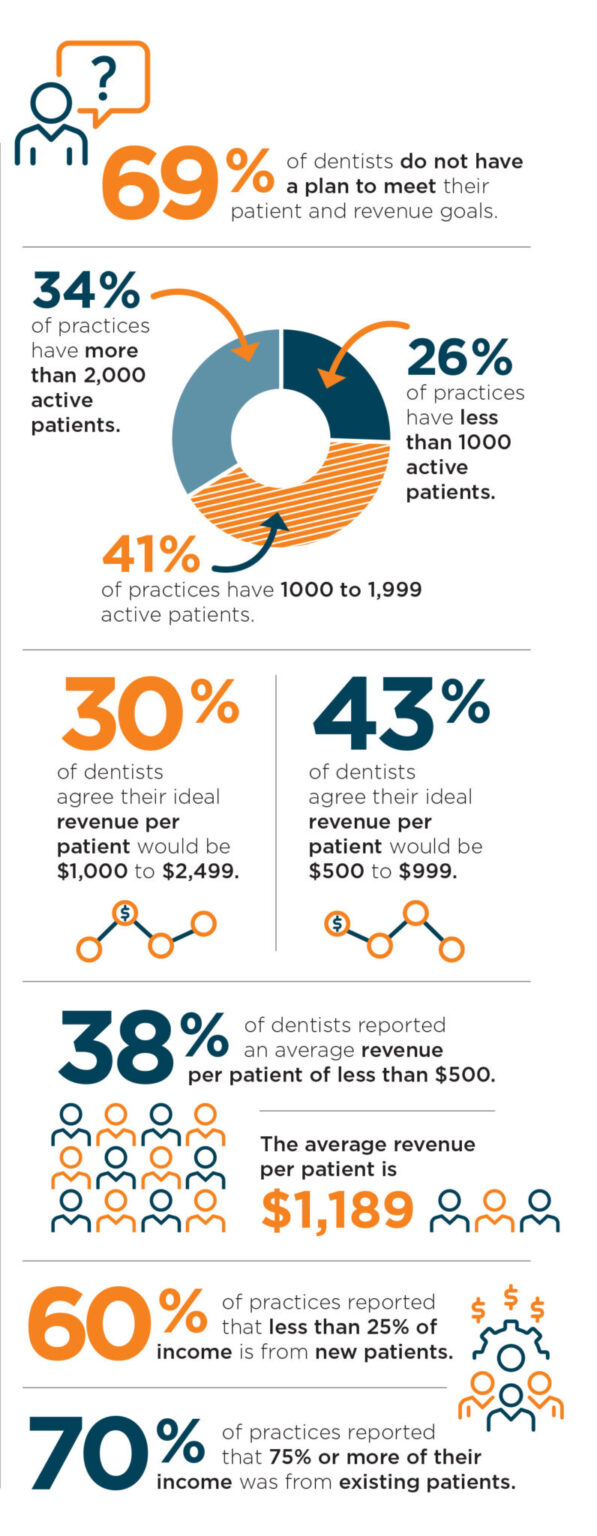
Let’s review where your practice stands compared to others across Canada. Nearly half of dentists reported having between 1000-2000 active patients at their practice with the average revenue per patient being $1,189. Does that match your office or are you in the percent with less patients and lower revenue? Nearly 40% of dentists have an average revenue per patient that is less than $500 while the same percentage of practitioners have a goal of $500-$1,000. But what are you doing to reach that goal?
If you find yourself among some of the lower-earning dental businesses, it is time to set some goals and intentions! Only 30% of dentists have made any plans to meet their patient and revenue goals. Use the tried-and-true SMART method when setting your goals for the best results.
Specific: Have a clearly defined goal rather than a general statement.
Measurable: Ensure you have a method of measuring the effectiveness of your plan.
Attainable: Make sure your goal is possible to reach within your desired time frame.
Realistic: Use the results from our survey to confirm you are setting realistic goals for the profession.
Timely: Set a timeline for when you want to hit your goals and begin measuring results.
Communicate your goals with your dental team for even better results! Your team is there to help – you do not need to do this alone.

As seen in the print issue of Oral Health June 2024
In October and November 2023 Bramm Research, a third-party independent research house, conducted an online survey of active, practicing non-hospital affiliated dentists and dental specialists on behalf of Oral Health. Survey invitations went out to a contact list of approximately 9,000 readers and there were 265 completions, for a response rate of 2.9 With a total sample of 265, the margin of error is plus or minus 5.9 percentage points at the 95 percent confidence level. If, for example, 50% of the sample indicated that agreed with a statement, then we can be reasonably sure (19 times out of 20) of an accuracy within +/- 5.9%. This means that a total census would reveal an answer of not less than 44.1% and not more than 55.9%.
Sponsored by












